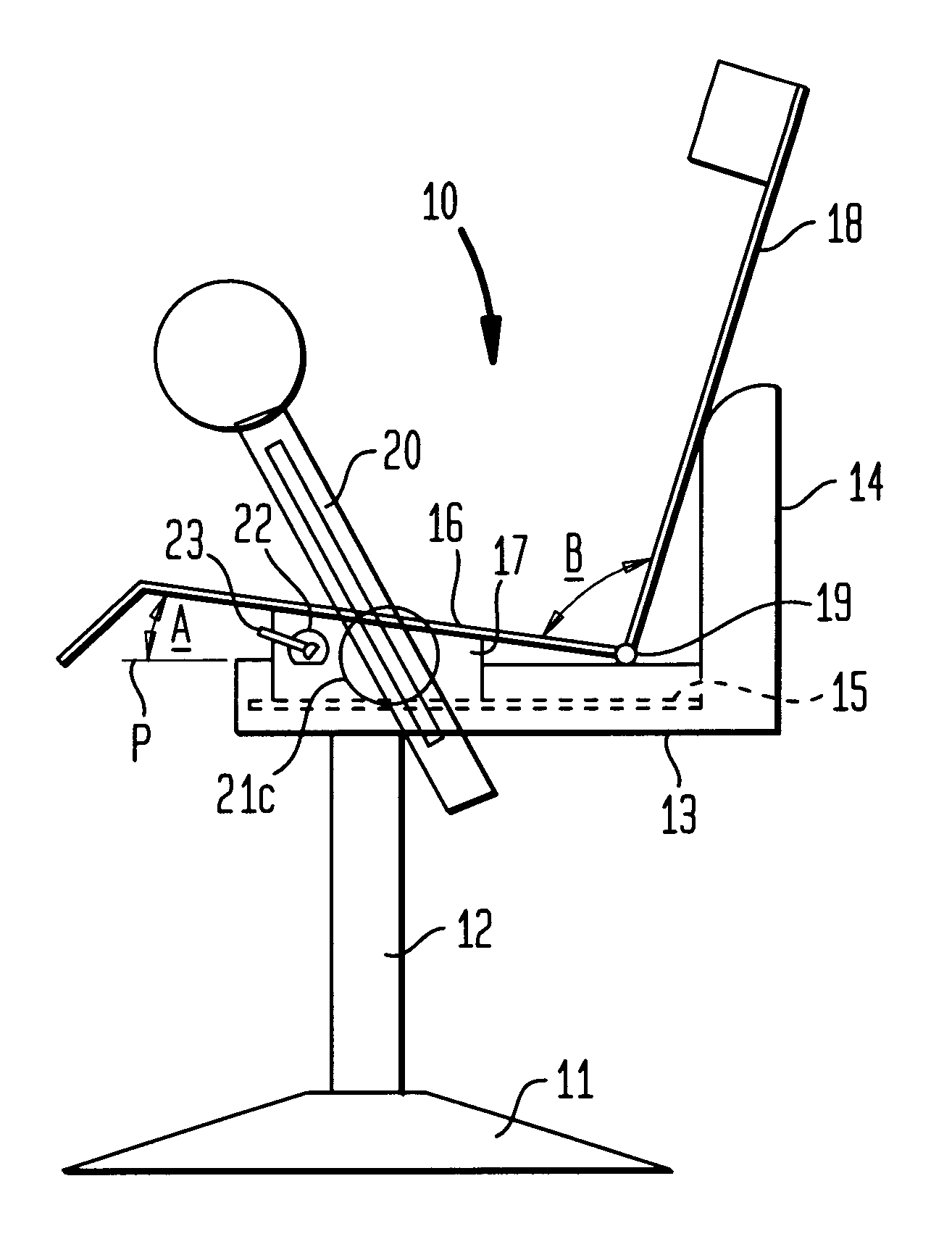Ergonomically designed chair
- Summary
- Abstract
- Description
- Claims
- Application Information
AI Technical Summary
Benefits of technology
Problems solved by technology
Method used
Image
Examples
Embodiment Construction
Referring now to FIGS. 2 and 3, schematically shown therein is a chair 10 ergonomically designed to cause its occupant to assume a sitting posture that maintains his physical well being. This sitting posture brings about a redistribution of the load imposed by the weight of the sitter with respect to a conventional chair or bench so as to avoid having the ischeal tuberosities bear the body weight and to relieve stress on the lower back, thereby obviating lower back pain.
Chair 10 is provided with a pedestal 11 on which a vertical column 12 is anchored to support a frame 13, preferably disposed horizontally, at a raised position above the pedestal. At the rear of frame 13, and preferably attached thereto, is an upright support 14, preferably simply a post; in practice, this post may take the form of a U-shaped vertical hoop. Also, the chair may be provided with legs rather than a single vertical column.
Slidable along frame 13 along a track 15 is a carrier 17 on which is mounted a seat...
PUM
 Login to View More
Login to View More Abstract
Description
Claims
Application Information
 Login to View More
Login to View More - R&D
- Intellectual Property
- Life Sciences
- Materials
- Tech Scout
- Unparalleled Data Quality
- Higher Quality Content
- 60% Fewer Hallucinations
Browse by: Latest US Patents, China's latest patents, Technical Efficacy Thesaurus, Application Domain, Technology Topic, Popular Technical Reports.
© 2025 PatSnap. All rights reserved.Legal|Privacy policy|Modern Slavery Act Transparency Statement|Sitemap|About US| Contact US: help@patsnap.com



